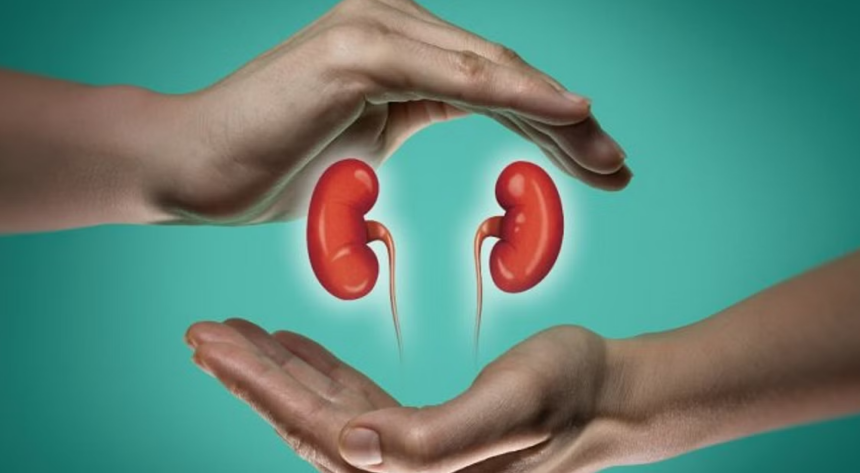INTERNATIONAL DAY OF YOGA
Prime Minister Narendra Modi proposed the idea of a dedicated yoga day during his address to the 69th session of the UN General Assembly in 2014. On December 11, 2014, all 193 UN member states unanimously agreed to observe the International Day of Yoga on June 21. The primary objective of the International Day of Yoga is to raise awareness about yoga as a holistic practice for mental and physical well-being.
Yoga originated in India and it has more than 5000 year’s history. Yoga is an ancient Indian way of life, which includes changes in mental attitude, diet, and the practice of specific techniques such as yogic postures (aasanas), breathing practices (pranayamas), and meditation to attain the highest level of consciousness. Pranayama is controlled or regulated yogic breathing practice. The slow breathing technique in pranayama causes comprehensive changes in body physiology by controlling the autonomic nervous system; it regularizes the rate and pattern of breathing and regulates the heart rate and its variability.
The anatomical overview of postural exercises in yoga suggests that these exercises are centered toward stretching and strengthening of muscles and increasing blood supply. Some people regard it as a fashionable fitness, but it can beneficial in various chronic diseases including diabetes, hypertension and chronic kidney disease. Yoga has been purported to have multiple health benefits. Over the last few years, western science is starting to provide some concrete clues as to how yoga works to improve health, heal aches and pains, and keep sickness at bay. Once we understand them, we will have even more motivation to step onto your mat, and you probably won’t feel so tongue-tied the next time someone asks you why you spend time on your mat.
Research studies have shown that Yoga lowers blood pressure and slows the heart rate. Two studies of people with hypertension, published in the leading scientific journal The Lancet, compared the effects of Savasana (Corpse Pose) with simply lying on a couch. After three months, Savasana was associated with a 26-point drop in systolic blood pressure (the top number) and a 15-point drop in diastolic blood pressure (the bottom number—and the higher the initial blood pressure, the bigger the drop. A slower heart rate can benefit people with high blood pressure or heart disease, and people who’ve had a stroke.Yoga lowers LDL (“bad”) cholesterol and boosts HDL (“good”) cholesterol and is now a part of International Society of Hypertension guidelines.
In people with diabetes, yoga has been found to lower blood sugar in several ways: by lowering cortisol and adrenaline levels, encouraging weight loss, and improving sensitivity to the effects of insulin. If your blood sugar levels improve there is a reduced risk of diabetic complications such as heart attack, kidney failure, and blindness.
Researchers have also found that people who practiced yoga for at least 30 minutes once a week for at least four years, gained less weight during middle adulthood. People who were overweight actually lost weight. Overall, those who practiced yoga had lower body mass indexes (BMIs) compared with those who did not practice yoga. Researchers attributed this to mindfulness. Mindful eating can lead to a more positive relationship with food and eating.
Yoga also acts as a stress buster. It quells the fluctuations of the mind, according to it slows down the mental loops of frustration, regret, anger, fear, and desire that can cause stress. And since stress is implicated in so many health problems—from migraines and insomnia to lupus, MS, eczema, high blood pressure, and heart attacks—if you learn to quiet your mind, you’ll be likely to live longer and healthier.
There is lack of good scientific data about the benefits of yoga directly on progression of CKD but absence of evidence does not mean evidence of absence. Diabetes and high blood pressure are amongst the commonest cause of chronic kidney disease and it has been established beyond doubt that improved blood pressure control helps in slowing progression of CKD regardless of the cause. Even after kidney transplant the better the blood pressure control the longer the life of the transplanted kidney.
In a study from West Indies published in 2013, it was found that 30 min of hatha yoga practice daily for 4 months showed a significant reduction in oxidative stress and increase in antioxidant activity in patients with CKD who were on hemodialysis. There is evidence that suggests yoga reduces sympathetic tone and improves parasympathetic tone thereby reducing pulse rate, SBP, DBP, and metabolic rate. In another study, 6 months yoga program was found to be safe and effective measure as adjuvant therapy to conventional treatment modalities in reducing blood pressure, improving renal function and improving QOL in patients with CKD.
Thus there is enough indirect evidence that yoga is beneficial in patients with kidney diseases. However it should be done under expert supervision. There are many other poses in yoga; you can choose those that are suitable for you under the guidance of professional practitioner. In a word, practicing yoga can promote metabolism, blood circulation and help discharge more metabolic wastes and toxins. It can improve endocrine functions and help repair damaged tissues. It can strengthen physical fitness and enhance immunity. It can make the mind peaceful and ease pressure and chronic pains. They also assist in managing water retention in the body. This enables sound sleep schedules and hence better rest. A well-rested body is better able to perform functions such as regulation of water in the body and stabilizing the heartbeat.
Though yoga is safe, not every kidney failure patient can do all the poses. For example, if the patients have polycystic kidney disease, bending and other positions that can cause pressures on the abdomen and back should be avoided. If the patients have high blood pressure or lower back pain, leg lifts should be avoided. Patients who of CKD have metabolic bone disease and hence aggressive and tough aasanas should be avoided. It is advisable to practice yoga under guidance of professional practitioner if you have kidney disease.
Yoga aasanas are known to increase relaxation. There are many poses in yoga that are suitable for kidney failure patients and they have been practiced and have been suggested to be beneficial in improving kidney functions. Of these I recommend these 11 simple ones:
Vrikshaaasan
In this aasana, one stands straight and then places right foot on the inner side of left thigh and joins the hands and raises them above the head. After a few minutes the hands are bought down and now the left foot is placed on the inner side of left thigh and the hands are joined and raies above the head.
Tada Aasaan
In this aasana, a person stands on his toes and stretches his arms above his head and joins his hands. In this posture he then breathes freely and holds as long as possible.
Cobra pose
In this aasana, a person lies on his belly with hands flat on the floor on each side and inhales and extends the spine forward, lifts the chest and head off the floor. One needs to make sure that the legs and feet are parallel and hold this position for several breaths. This can help put mild pressure on the kidneys and revitalize the kidney functions.
Camel pose
In this aasana the person kneels on the floor, extends the spine, opens the chest and reaches for the feet. One needs to make sure that thighs are perpendicular to the floor and the toes are tucked. This posture can help improve blood circulation as well as the body’s circulating system.
Paschimottanasana
In this aasana you bend forwards and try and touch your toes.
Surya Namaskaar
It is one of the best Yogic aasanas as it involves a combination of 11 steps. You can see details on Youtube.
Kati chaakra aasan
In this aasana one lies on the floor and stretches the hands on the sides and legs kept 3 feet apart. The head is turned to one side and the knees in the opposite direction.
Anulom vilom
A person needs to inhale through the left nostril and exhale through the right nostril and then inhale with the right nostril and exhale through the left one. This alternate nostril breath exercises can promote blood circulation. All these are best done first thing in the morning.
Kapaal Bhaarti
In this aasana the person exhales forcefully and then inhales passively. This is repeated for a few times as per convenience followed by a break and 3 – 5 sessions.
Bhastrika
In this aasana a person inhales deeply followed by forceful exhalation. This is then repated 3-5 times maximum.
Shavasana
In this aasana one lies flat on the couch and absolutely rests on the couch for few minutes, with arms and legs lying loosely.
Thus yoga keeps the internal organs healthy, balances the various systems in the body, and effectively controls the stress of the body and mind. Some of the yoga aasanas and pranayamas facilitate internal cleansing that ensures the flushing out of toxins from the body. It can help prevent Hypertension and Daibetes and thus protect your kidneys too. In those patients who have CKD, improved blood sugar and blood pressure control will prolong the life of the kidneys.
So remember; A Yoga session a Day helps keep Kidney disease away. For more information please subscribe to my YouTube Channel Dr Sanjeev Gulati Kidney Clinic.
(The Author is Principal Director Nephrology and Kidney Transplant Fortis Group of Hospitals, NCR and President Indian Society of Nephrology. Feedback: [email protected])








